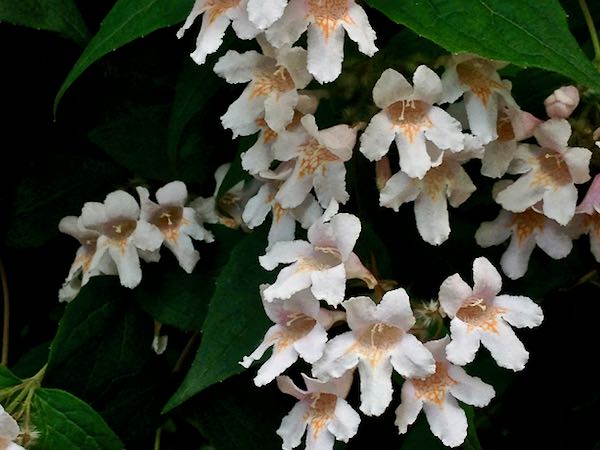Linnaea amabilis: The Beauty Bush
Linnaea amabilis or Kolkwitzia amabilis, commonly known as Beauty Bush, is a deciduous shrub that belongs to the Caprifoliaceae family. Native to China, where it is called Wei shi shu (蝟实), this plant is characterized by its arching and spreading growth habit. It is a fast-growing shrub, reaching a height of up to 3 meters or 10 feet. With its attractive appearance and hardiness, Linnaea amabilis has gained popularity among gardeners worldwide.
Discovery and Naming:
Linnaea amabilis was discovered twice in China. First by Giuseppe Giraldi (1848-1901), a Jesuit missionary and botanist, and later by Ernest Henry ‘Chinese’ Wilson (1876-1930), a British plant collector. The plant was first described by German botanist Carl Otto Robert Peter Paul Graebner (1871-1933), who named it Kolkwitzia after Richard Kolkwitz, a German professor of botany. In 2013, Linnaea amabilis was moved into the Linnaea genus. Although rare in the wild, it became widely cultivated in the United States after World War I.
Description:
Linnaea amabilis displays light brown bark and glossy, dark green, oval leaves that grow in an opposite arrangement. The shrub produces an abundance of bell-shaped flowers in late spring, adding a burst of color to the garden. These flowers, which are approximately 1-2.5 centimeters long, can be either white or pink. While they are visually appealing, Linnaea amabilis flowers are unscented. After flowering, the plant forms hairy ovoid fruit capsules, which measure about 0.25 or 60 millimeters in length.
Cultivation of Linnaea amabilis:
Sunlight: To ensure optimal growth and flowering, it is recommended to grow Linnaea amabilis in full sun or partial shade. The plant thrives when exposed to at least six hours of direct sunlight per day.
Watering: Linnaea amabilis prefers moist and fertile soil that is well-drained. Regular watering is necessary to keep the soil consistently moist, especially during periods of drought. However, it is important to avoid waterlogged conditions, as excessive moisture can lead to root rot.
Soil: This shrub thrives in moist and fertile soil. It is adaptable to various soil types, but well-drained soil is crucial for its overall health and vigor. Prior to planting, amend the soil with organic matter, such as compost or well-rotted manure, to improve its fertility and drainage.
Pests and Diseases: Linnaea amabilis is generally resistant to pests and diseases, making it relatively easy to maintain. However, it is still important to monitor for common garden pests, such as aphids and scale insects. These can be controlled using appropriate insecticidal treatments or natural remedies like neem oil.
Propagation: Linnaea amabilis can be propagated through semi-hardwood cuttings or by utilizing suckers that emerge from the base of the plant. Semi-hardwood cuttings taken in late summer or early autumn have a good chance of rooting and developing into new plants. Ensure the cuttings have a few leaf nodes and remove any lower leaves to promote successful rooting.
Linnaea amabilis, with its resistance to deer and attractive qualities, also serves as a magnet for birds and bees, making it a valuable addition to any garden or landscape. With proper care and attention to its cultivation requirements, this Beauty Bush can thrive and bring beauty to outdoor spaces.






